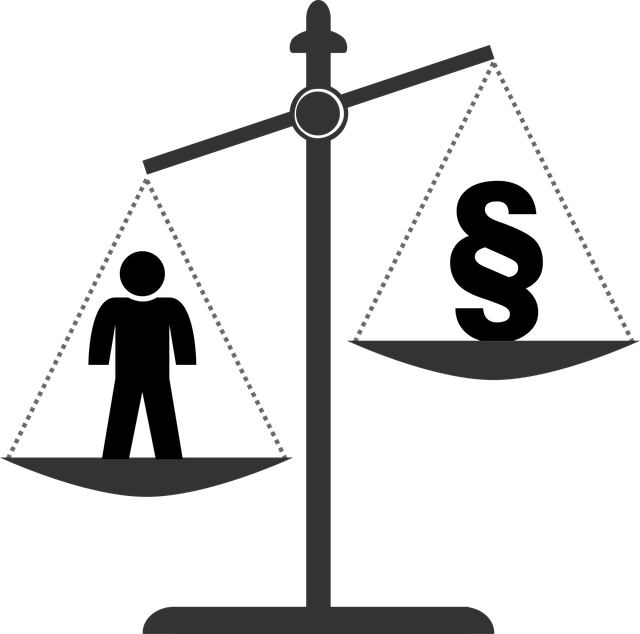Understanding sentencing guidelines is vital for ensuring fairness and consistency in penalty determination, impacting outcomes from indictment avoidance to charge dismissal. These guidelines, balancing protection with fairness, dictate penalties for non-compliance, promoting public trust and due process. Their evolution towards restorative justice emphasizes flexibility, community sanctions, and reducing recidivism, reflecting changing societal norms and technological advancements.
Regulatory compliance issues, particularly sentencing guidelines, significantly shape the criminal justice system. This article delves into the multifaceted impact of sentencing guidelines on penalties, exploring key aspects such as understanding the framework for penalties, effects on the criminal justice system, balancing deterrence and fairness, challenges in implementation, and future trends in penal code reforms. By examining how do sentencing guidelines affect penalties, we gain insights into the complex interplay between law and justice.
- Understanding Sentencing Guidelines: A Framework for Penalties
- Impact of Guidelines on Criminal Justice System
- Balancing Deterrence and Fairness in Punishment
- Challenges in Implementing Consistent Sentences
- Future Trends in Penal Code Reforms and Their Effects
Understanding Sentencing Guidelines: A Framework for Penalties

Understanding sentencing guidelines is paramount when navigating regulatory compliance issues as they serve as a structured framework for determining penalties. These guidelines provide a consistent approach to adjudicating cases, ensuring fairness and consistency across similar offenses. They consider various factors such as the nature of the infraction, prior criminal history, and mitigating or aggravating circumstances. By setting clear parameters, sentencing guidelines help maintain public trust in the justice system by reducing perceived arbitrariness.
When an individual or entity faces regulatory charges, adhering to these guidelines can significantly impact the outcome. It offers a roadmap for legal professionals and judges, guiding decisions on whether to avoid indictment, negotiate plea bargains, or pursue a complete dismissal of all charges. Throughout all stages of the investigative and enforcement process, these guidelines ensure that penalties are proportional to the offense, promoting justice while allowing for flexibility in unique circumstances.
Impact of Guidelines on Criminal Justice System

The sentencing guidelines play a pivotal role in shaping the criminal justice system by providing a structured framework for determining penalties. These guidelines are designed to ensure consistency and fairness in judgments, eliminating arbitrary sentencing practices. By setting clear thresholds for various crimes, they offer a uniform approach, allowing judges to make informed decisions based on specific factors. This systematic method not only streamlines the process but also promotes accountability within the justice system.
The impact is profound, especially during all stages of the investigative and enforcement process. Law enforcement agencies and prosecutors benefit from these guidelines as they provide a clear direction in charging decisions, plea bargaining, and negotiating sentences. Furthermore, the respect for due process is enhanced as judges can justify their sentencing choices, ensuring transparency. This has led to an unprecedented track record of consistent and fair sentencing across different jurisdictions.
Balancing Deterrence and Fairness in Punishment

In the realm of regulatory compliance, balancing deterrence and fairness in punishment is a delicate act. Sentencing guidelines play a pivotal role in this equilibrium, as they dictate the penalties for non-compliance. These guidelines are designed to serve as a robust deterrent against unethical practices while ensuring that penalties are proportional and fair. An unprecedented track record of successful prosecutions in white collar defense underscores the importance of these measures.
However, the challenge lies in striking the right balance. Overly harsh punishments may deter some but could also be seen as disproportionate, leading to unfair outcomes. Conversely, lenient sentences might not effectively discourage non-compliance. As such, sentencing guidelines must be meticulously crafted and regularly reviewed to maintain a just system that protects the integrity of regulatory frameworks without compromising fairness in general criminal defense.
Challenges in Implementing Consistent Sentences

Implementing consistent sentences across different jurisdictions and even within a single country can be a significant challenge in regulatory compliance. This issue stems from the intricate interplay between sentencing guidelines, judicial discretion, and the vast range of factors that influence a judge’s decision when meting out punishment. Sentencing guidelines, while designed to promote uniformity, often face criticism for their rigid nature, as they may not adequately account for the unique circumstances of each case. As such, penalties can vary widely even for comparable offenses, creating an inconsistent legal landscape.
How do sentencing guidelines affect penalties? This question is at the heart of many regulatory compliance issues. For instance, in white-collar and economic crimes cases, where complex financial transactions and extensive investigations are involved, a uniform approach to sentencing might struggle to reflect the distinct nature of each offense. This inconsistency can impact not only individuals but also businesses, particularly those operating across different jurisdictions with varying legal frameworks. Moreover, as jury trials in general criminal defense cases continue to be prevalent, ensuring consistent sentencing becomes even more critical to maintain public trust in the justice system.
Future Trends in Penal Code Reforms and Their Effects

The future landscape of penal code reforms is poised for significant shifts, driven by evolving societal norms and technological advancements. One notable trend is the increasing emphasis on restorative justice, which seeks to rehabilitate offenders and address harm to victims rather than solely focusing on punitive measures. This shift could lead to more flexible sentencing guidelines that prioritize community service, restitution, and alternative dispute resolution methods. Such reforms aim to reduce recidivism rates and foster a sense of accountability within both criminal justice systems and the broader society.
How do these changes impact penalties? Sentencing guidelines play a pivotal role in determining the severity of punishments. With a move towards restorative practices, there’s a growing focus on proportionality and the specific circumstances of each case. This could result in more tailored sentences, especially for non-violent offenses, which might include community-based sanctions rather than incarceration. Moreover, with the rise of white-collar crime defenses and an increased awareness of the potential consequences of indictment, philanthropic and political communities are pushing for reforms that encourage cooperation and leniency in exchange for information, thereby avoiding indictment and its stringent penalties.
Sentencing guidelines play a pivotal role in shaping the criminal justice system by influencing the severity of penalties. They aim to balance deterrence and fairness, ensuring consistent treatment of offenders. However, challenges remain in their uniform implementation. Future reforms, focusing on evidence-based approaches and addressing systemic biases, are crucial to enhancing sentencing fairness. By understanding these guidelines and their impact, policymakers can navigate the delicate balance between punishment and rehabilitation, ultimately refining the justice system’s effectiveness.






